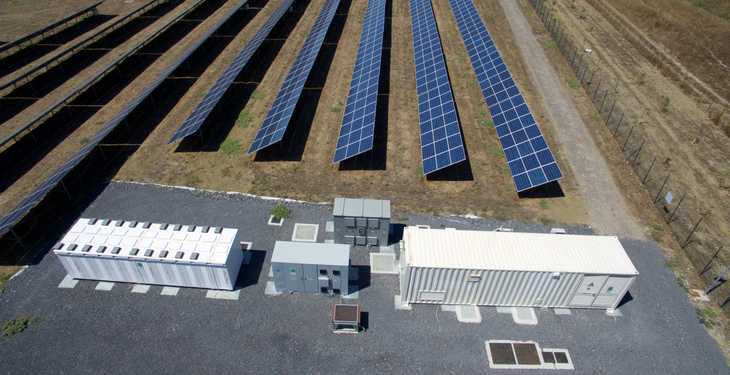Enel’s latest La Silla photovoltaic plant in northern Chile has started operations.
“La Silla…will serve scientific progress beyond the electricity industry by powering a major astronomical research institution,” said Salvatore Bernabei, Head of Latin America at Enel’s Global Renewable Energies Division.
La Silla is a utility-scale PV plant that combines the use of innovative bifacial and smart modules with conventional modules for side-by-side testing. The plant, which is owned by the Group’s subsidiary Enel Green Power Chile Ltda. (“EGPC”), was named after the neighbouring astronomical observatory it will supply with clean energy. The PV plant and the observatory are located on a hill near the commune of La Higuera in the Coquimbo Region, on the outskirts of the Atacama Desert, 600 km north of Chilean capital Santiago.
La Silla’s innovative smart PV modules boast a microchip that optimises production from each panel by allowing it to deliver electricity to the grid regardless of any eventual malfunctions affecting other panels, unlike conventional modules, where one malfunctioning panel can affect production of the other working panels. The facility’s bifacial modules capture solar energy from both sides of the PV panel as opposed to traditional modules, which capture energy from just one side of the panel.
The side-by-side testing of the smart and bifacial modules with conventional panels will compare their performance with that of the conventional panels in the same site. The use of the innovative panels is expected to increase power generation at the facility by between 5-10% compared to a conventional PV plant of equal size. Early results from testing confirm this estimate and Enel is continuing to explore potential improvements.
Enel has invested approximately 3.4 million US dollars in the construction of La Silla.
The PV plant, which has a long-term power purchase agreement with the La Silla astronomical observatory, will deliver its energy to Chile’s Central Region Interconnected System (SIC). The facility is capable of generating approximately 4.75 GWh each year, equivalent to the electricity needs of approximately 2,000 Chilean households and more than 50% of the observatory’s annual power consumption. The clean energy generated by La Silla will avoid the emission of over 2,000 tonnes of CO2.
The La Silla observatory is equipped with several optical telescopes with mirror diameters of up to 3.6 metres. The facility belongs to ESO, an intergovernmental organisation focused on the design, construction and operation of powerful facilities for astronomical observation from Earth. In addition to La Silla, ESO has the Paranal Observatory that houses the Very Large Telescope (VLT). About 20 km from Paranal, at the summit of Cerro Armazones, ESO is building the European Extremely Large Telescope (E-ELT), a telescope 39 meters in diameter. ESO also operates the APEX telescope, located at an altitude of 5,000 metres on the Chajnantor plateau, about 50 km from San Pedro de Atacama. Finally, ESO is a partner in ALMA, the world’s largest radio astronomy observatory.
Enel, through its subsidiary EGPC, currently operates a portfolio of plants in Chile that have a combined installed capacity of over 1 GW, of which 452 MW comes from wind power, 492 MW from PV solar and 92 MW from hydropower. In addition, EGPC currently has 150 MW of projects in execution, which when completed will bring the company’s total installed capacity in Chile to about 1,200 MW. Among these projects is Cerro Pabellón, which will have a gross installed capacity of 48 MW and will be South America’s first geothermal plant.
